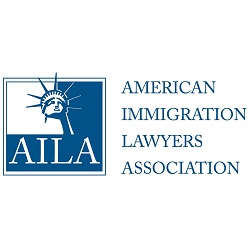 Specialty Worker Visa: H-1B
Specialty Worker Visa: H-1B
The H-1B visa is a non-immigrant visa designed to allow U.S. employers to recruit & employ foreign professionals in specialty occupations to work in the U.S. for specified periods of time. To qualify for an H-1B visa, the sponsoring employer and potential employee must meet specific requirements. The employer must comply with the H-1B process requirements, adhering to USCIS regulations and Department of Labor requirements associated with obtaining a Labor Condition Application (LCA).
The U.S. employer must demonstrate that the employment is offered in a specialty occupation, either on a full or part time basis, located within the U.S. and that the prospective employee has met the required qualifications.
Qualifications for the H-1B Category
I. Specialty Occupation
The occupation has to be a specialty occupation that generally requires a bachelor’s degree or higher degree(or its equivalent) as a minimum for entry into the occupation. Fashion models of distinguished merit or ability may also apply for the H-1B program.
A position that would normally not require a bachelor’s degree may qualify as a specialty occupation if the position is so complex or unique that only an individual with a degree can perform the requisite duties. A position with specific duties that are so specialized and complex that the knowledge required to perform them is usually associated with the attainment of a bachelor’s or higher degree may also qualify as a specialty occupation.
Examples of specialty occupations include:
Architects, Engineers, Professors, Teachers, Researchers, Medical Professionals, Dietitians, Physicians, Nurses, Computer Professionals, Accountants, Attorneys, Social Workers, Economists, Librarians and other professionals.
II. Educational Requirements
The employer must show that the foreign national worker meets the specific educational requirements to be engaged in the specialty occupation. As a general rule, the foreign national worker must possess a Bachelor’s or higher degree from an accredited college or university and the degree must be a requirement to qualify for the specialty occupation.
If the foreign national worker was awarded his/her degree from an institution not located in the U.S., that degree must be evaluated to determine if it can be considered equivalent to a U.S. awarded degree. If the foreign national possesses a Bachelor’s degree or its equivalent, specific work experience is not required.
If a foreign national does not meet the educational requirements, experience or training may be substituted, whereby three years of professional experience is considered equivalent to one year of college education (every 3 year of work experience = 1 year of University / College education).
Furthermore, if state law requires a worker(such as doctors, dentists, attorneys, CPAs, registered nurses) to obtain a license or professional certification to practice a specific specialty occupation, the foreign national must hold the appropriate license and be fully qualified to lawfully perform the duties of the position offered.
III. DOL and USCIS Requirements
In addition to both the Occupation requirements and the Education requirements, the employer must also adhere to the Department of Labor (DOL) requirements to obtain a Labor Condition Application (LCA). After the DOL certifies the LCA, the employer must submit Form I-129 to the USCIS for permission to employ the foreign worker under H-1B status, so that the foreign national worker may be hired.
To successfully complete this process, the employer must first attest that the H-1B visa worker is being paid, at minimum, what is called the “prevailing wage” for the job. The “prevailing wage” is defined by DOL rules as the average rate of wages paid to workers similarly employed in the area of intended employment. The prevailing wage is determined through the National Prevailing Wage Center (NPWC).
Next, the employer must attest to the following six conditions:
- The employer will pay the H-1B employee the higher of:
- The actual wage rate that it pays to all other individuals with similar experience and qualifications, or
- The prevailing wage level for the occupation in the “area of intended employment”, which is defined as the Metropolitan Statistical Area (MSA) and the narrower Primary Metropolitan Statistical Area (PSMA).
- Employment of the H-1B worker will not adversely affect the working conditions of workers similarly employed in the intended area of employment;
- There is no current strike/lockout involving the prospective H-1B worker’s position at his/her workplace;
- The employer will provide notice of filing of the labor condition application to the employees’ collective bargaining representative for the H-1B occupation or, lacking such a representative, will conspicuously post such notice at the work site onthe date the labor condition application is filed,or within 30 days before it is filed, and shall remain posted for 10 days;
- The employer will maintain for public examination:
- A copy of the Labor Condition Application filed,
- Documentation of the salary paid to the H-1B employee,
- An explanation of how the actual wage was determined, and
- Documentation of the basis used for the prevailing wage;
- The employer must agree to pay the foreign national the reasonable cost of transportation to return to his or her home country if the employer terminates the foreign national’s employment prior to the end of the authorized employment period.
IV. U.S. Employer Sponsorship Requirement
For a foreign national to obtain an H-1B visa, an employer must make a job offer and be willing to sponsor the foreign national by filing a petition with the USCIS. Generally, individuals cannot apply for an H-1B visa to allow them to work in the US. The U.S. employer must petition for the entry of the employee.
An employer seeking the services of an H-1B foreign national and filing the necessary papers to obtain such services must be a “U.S. employer.” A U.S. employer is a person, firm, corporation, contractor or other association or organization in the United States with an IRS tax identification number known as a Federal Employer Identification Number (FEIN). There must be an employer-employee relationship, as indicated by the fact that the employer may hire, fire, pay, supervise or otherwise control the work of the employee.
There are two major requirements that the employer must fulfill:
- The employer must have the ability to pay the employee.
- The job offer to the intended H-1B beneficiary should be a bona fide offer. In other words, there must be a real business need for the position to be filled by the foreign national worker.
Cap on H-1B Visas
Please note that the number of new H-1B non-immigrant visas issued each year is subject to a cap. The maximum number of visas is capped at 65,000 per fiscal year; counted from October 1 to September 30. Out of these, 6,800 are reserved for Chile and Singapore under certain Free Trade Agreements between these countries and the United States. An additional 20,000 are available specifically to those individuals who have received a Master’s degree or higher from a U.S. institution of higher education. If there are any visa numbers that are unused under the Chile/Singapore quota, they will be used for candidates that fall under the regular cap.
Dual Intent
One of the biggest benefits of the H-1B visa is that it is one of the few “dual intent” visas available. That is, it allows the H-1B holder to have both “non-immigrant” AND “immigrant” intent with respect to his or her plans to immigrate to the United States. Therefore, despite seeking temporary employment in the U.S. via a non-immigrant H-1B visa, there is no need for an H-1B holder to maintain a foreign residence during his period of stay in the United States, and H-1B visa the holder may also petition for future permanent U.S. residence through one of the work based immigrant visa categories as well . One does not preclude the other.
What About My Family?
The H1B visa entitles the spouse and children (under the age of 21) of the foreign national to accompany them and legally live in the USA on an H-4 visa. However, the spouse and children have to obtain their own work visa for working.
To find out what specific requirements you need to satisfy the H-1B category, contact us today to schedule a consultation with one of our U.S. licensed Immigration lawyers.


